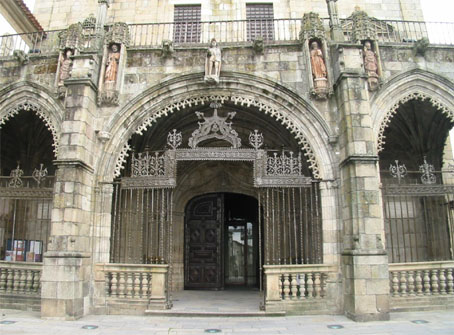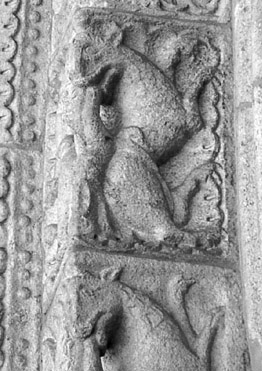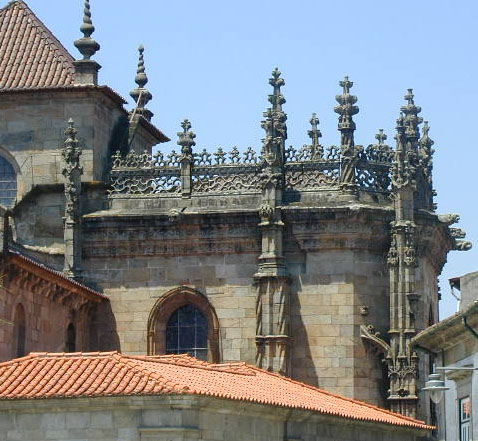 |
 |
 |
 |
 |
 |
 |
 |
 |
 |
 |
 |
 |
 |
 |
 |
 |
 |
 |
 |
 |
 |
 |
 |
 |
 |
|
|
S� de Braga |
|
|
|
 |
|
|
|
The Cathedral of Braga (S� de Braga) has a long history. The Diocese of Braga dates from the 3rd century AD, being one of the oldest in the peninsula and the centre of the christianisation of Gallecia (Northwestern Iberia). When Roman power was being dissolved by invading Germanic tribes, Braga became the capital of the Suebi Kingdom (409 to 584). Bishop Martin of Dume, a great religious figure of the time, converted the Suebi to Catholicism around 550. The importance of Braga diminished during Visigoth and Islamic times. Around 1071, when the city was definitely back into Christian hands, Bishop Pedro started the building of a new cathedral, which was consacrated in 1089 (only the Eastern chapels were finished at this time). Under Count Henry and Bishop Geraldo, Braga became in 1107 an important archbishopric, with power over a large region in Northwestern Iberia. Construction on the cathedral was then resumed and lasted until the 13th century, but the details are obscure. The cathedral underwent many modifications, specially in Manueline and Baroque periods, and much of the Romanesque building has been lost. Luckily, important remains still exist. |
|
|
|
 |
|
|
|
Main fa�ade of the Cathedral of Braga. The early Romanesque fa�ade has been totally supressed, except for some archivolts and capitals of the main portal. Between 1486 and 1501, a galilee in Late Gothic style was built preceeding the portal. The galilee has ribbed vaulting and is decorated with statues and gargoyles. In the early 16th century, bishop Diogo de Sousa ordered the installation of the Manueline metal gate to close the galilee and modified the portal, sacrificing some of the Romanesque archivolts. The upper part of the fa�ade and towers have been totally modernised in Baroque times. |
|
|
|
 |
|
|
|
Left - Detail of the inner archivolt of the main portal of Braga Cathedral (late 12th or early 13th century). The archivolt has a theme very often repeated in Portuguese Romanesque: pairs of wild animals attacking human figures. In the image, the lions are bitting the feet of persons who are being held upside-down. These are likely representations of the evil of the world and should remind the worshippers of the wrath of God.
The outer archivolt has a different theme: it seems to depict a popular moralistic story, perhaps the Roman de Renard of French tradition, which was famous all over Europe at the time. The South portal of the cathedral, which is also Romanesque, has totally different themes. |
|
|
|
|
|
 |
|
|
|
Up - Main chapel of Braga Cathedral. In 1509, Bishop Diogo de Sousa ordered the construcion of a new main chapel to architect Joao de Castilho. The exterior of the chapel has beautiful Late Gothic and Manueline tracery with gargoyles and pinacles, and the interior has intrincate Manueline ribbed vaulting. |
|
|
|
 |
|
|
|
Left - The outer wall of the main chapel has a beautiful statue of Madonna breastfeeding Jesus (Madona do Leite) between the coats-of-arms of Portugal and Bishop Diogo de Sousa. |
|
|
|
|
|
 |
|
|
|
Page 2
Index |
|



